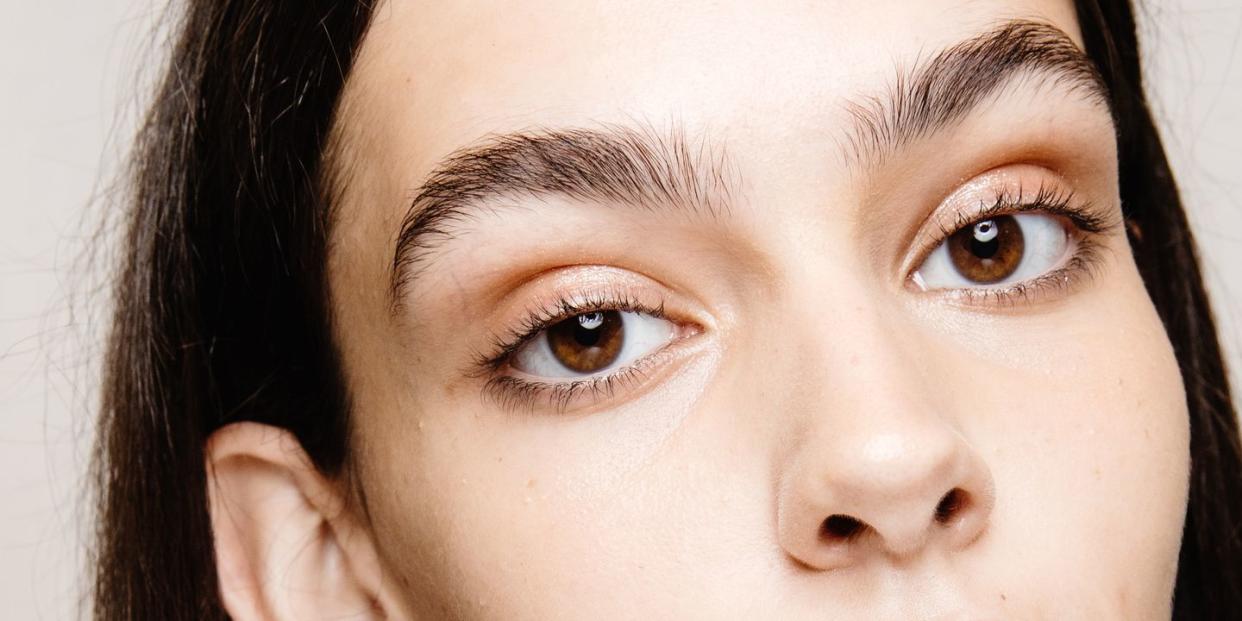Are Blackhead-Sucking Pore Vacuums Legit?

Blackheads can be stubborn. Sometimes, they are just no match for treatments like exfoliating, steaming, and using at-home comedone extractors. Enter: pore vacuums. You might have seen ads for them pop up on your IG’s Explore page and wondered if they actually work. (Let's be real: the pore-clearing action does look a little too good to be true.) We tapped beauty industry pros to weigh in on if the devices are actually worth the hype.
What exactly is a pore vacuum?
They’re exactly what they sound like. “They are small suction devices to remove debris from pores,” says dermatologist Dhaval Bhanusali, M.D. They remove small, loose blockages through manual exfoliation, dermatologist Joshua Zeichner, M.D., further explains. “If used on a regular basis, they can improve radiance of the skin, similar to the effect of a treatment like microdermabrasion,” he says.
The catch: They have limited use when it comes to treating large, deep blackheads and are not effective when removing whiteheads (blockages that have only a very small orifice connecting them to the surface of the skin), Zeichner says.
Both Zeichner and Bhanusali say other methods of exfoliation can be safer than pore vacuums. “Using a cleanser with salicylic acid can have a similar effect over-time and is much less traumatic,” says Bhanusali. “Additionally, an occasional medical-grade facial can have this aspect of treatment as part of it.” He goes on to say that the benefit of a medical-grade facial is that it would be done by an expert who would minimize risk.
What is the proper way to use a pore vacuum?
Watching a pore vacuum at work via YouTube is one thing—actually using one correctly is a totally different ballgame. Remember—misuse can lead to inflammation, light bruising, or even broken capillaries (and, obviously, no one wants that).
Zeichner suggests using pore vacuums on clean, dry skin, and running the device from the middle of your face outward in short, single strokes. “The key is constant motion,” he says, explaining that you don’t want to let the vacuum stay in one single area for an extended period of time. “Applying too much pressure in one area can cause trauma to the skin.”
Additionally, here's what to avoid when using a pore vacuum.
Overuse. According to Zeichner, you should start a vacuum once per week at first, as your skin begins to tolerate it, before progressing to twice or three times per week.
Retinoids. Retinoids can make your skin more sensitive and susceptible to trauma.
How do you choose a pore vacuum?
Interested in trying the device yourself? Zeichner says to opt for ones that offer different levels of suction (which can minimize the risk of trauma). He adds that some of these devices can be equipped with a microdermabrasion tip—which can be friendly for sensitive skin. Our picks include the following.
What is it like to use a pore vacuum?
Kristina Rodulfo, beauty director and writer, tried the PMD Personal Microderm Classic: a device meant for microdermabrasion (using spinning discs made of aluminum oxide crystals), but also offers pore-clearing suction. The benefit, the brand claims, is to stimulate increased blood flow and circulation. It "triggers the body's essential healing process, which builds collagen and elastin and leaves the skin firm and radiant." With the help of Sandra Lee (famously known as Dr. Pimple Popper) Rodulfo sought to erase her blackheads.
“I asked Dr. Pimple Popper for some skin prep advice to get the best results. To maximize smoothness, she told me to steam with a hot shower or over a pot of boiling water to open up pores and soften up debris within them. When I finally decided to give the PMD a go, I started with the most gentle of the spinning, exfoliating discs and guided the suction in upward strokes from my jawline all the way up and across my forehead. The suction wasn't overpowering and it was quite difficult to maneuver around my nose, so I didn't feel like I was really going in on my blackheads in a really satisfying way. My skin was pretty red and inflamed after my first session–but that's probably because I had been using a retinol cream (which instructions warned me I should've laid off of 48 hours prior–I was just impatient).
I revisited the PMD for a session one week later, then again one week after that, eventually advancing to the blue disc–slightly more heavy duty, but still safe for sensitive skin. I followed the rules this time, refraining from using retinol, and found my skin was much less red following the exfoliation. My skin was extra, baby-skin smooth and I definitely felt the difference while I was applying makeup. I could even see the layer of dead skin cells coming off in the cap of the PMD. I'm sorry to report, however, that the vacuum didn't do much to budge blackheads out. No smooth, satisfying, video-friendly gunk-suction to be seen. Being that the PMD was the last of all the blackhead-eliminating options I'd tried, what could I do now? Dr. Pimple Popper knows best–viral beauty tools be damned.”
You Might Also Like

